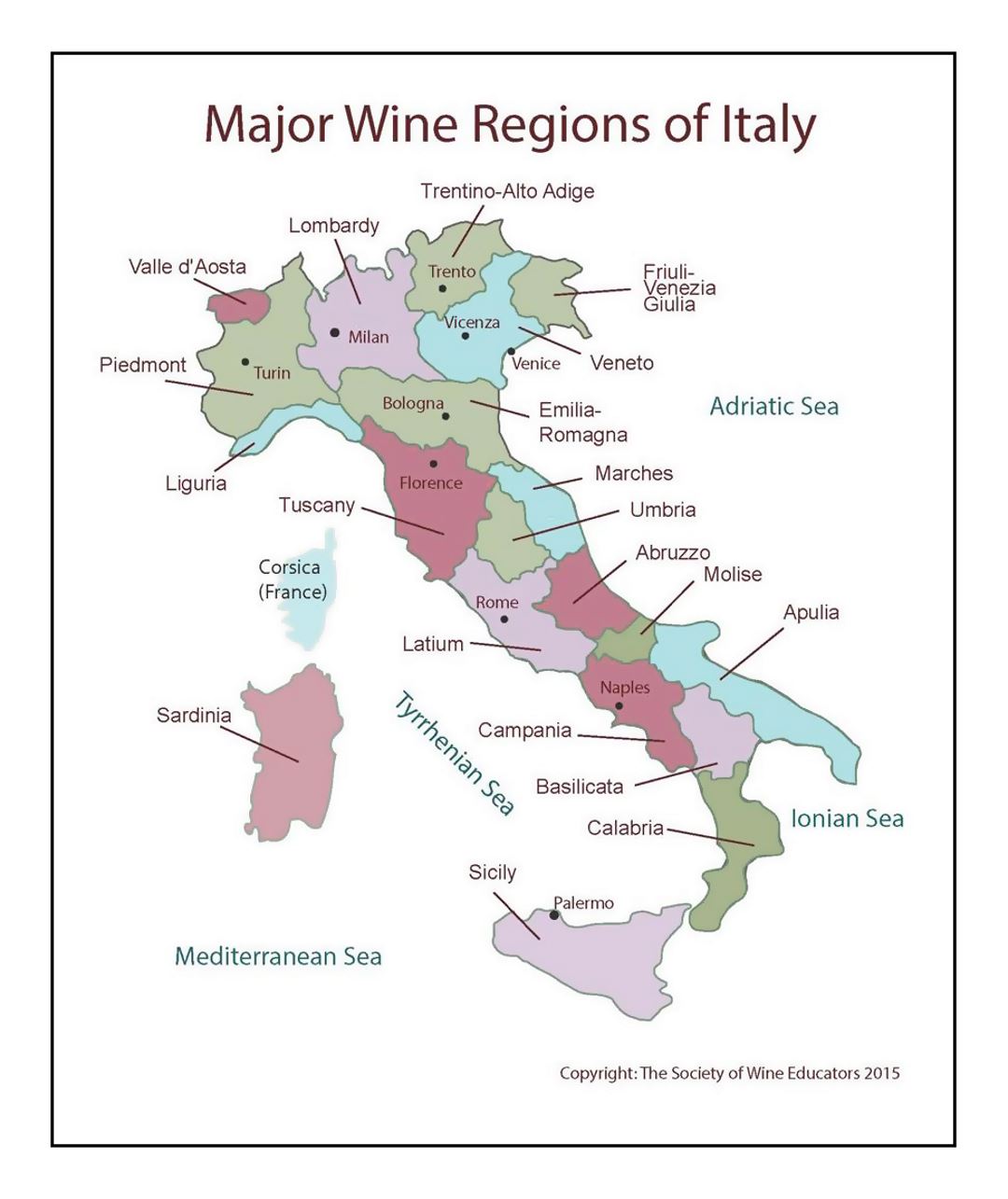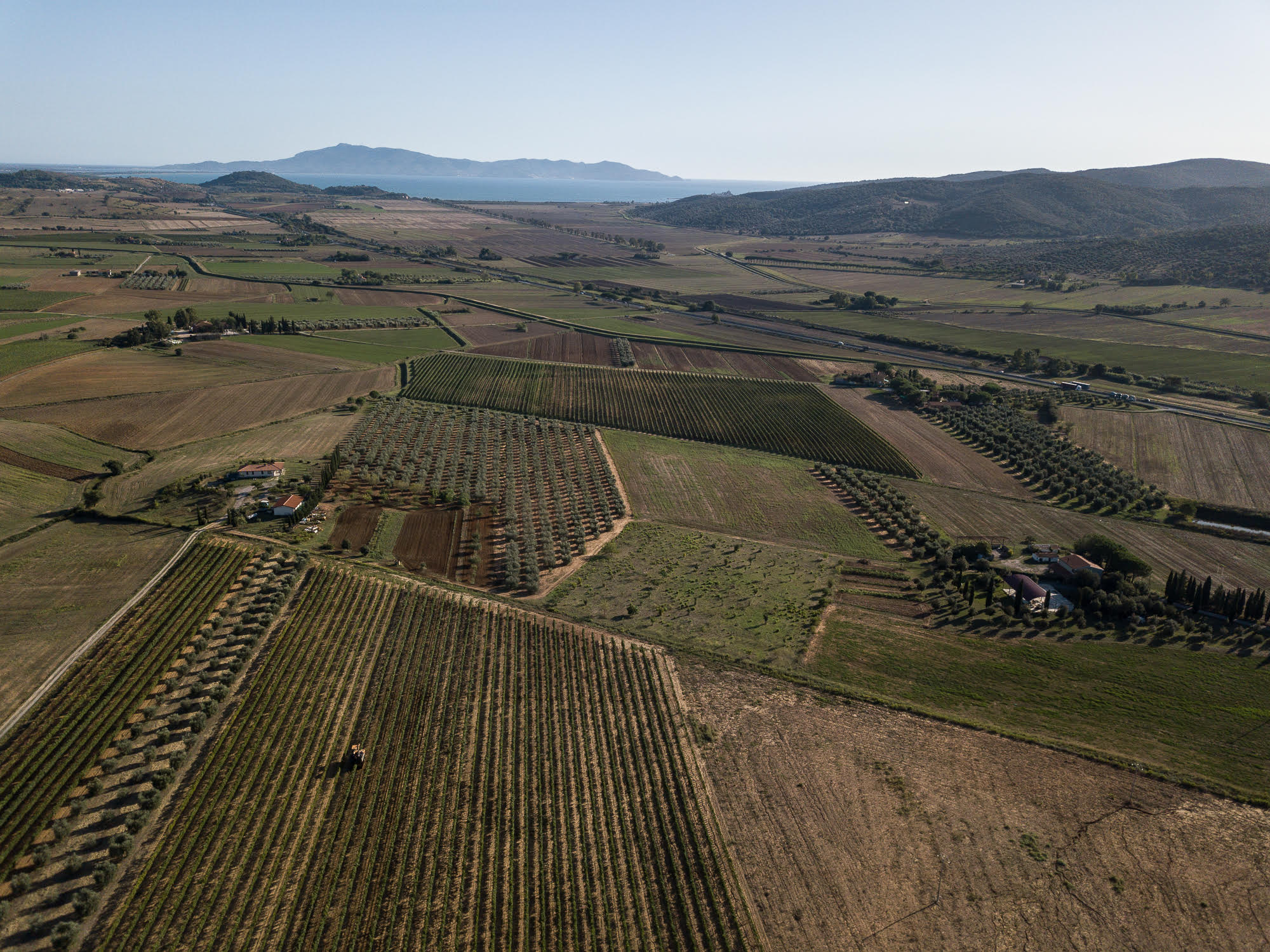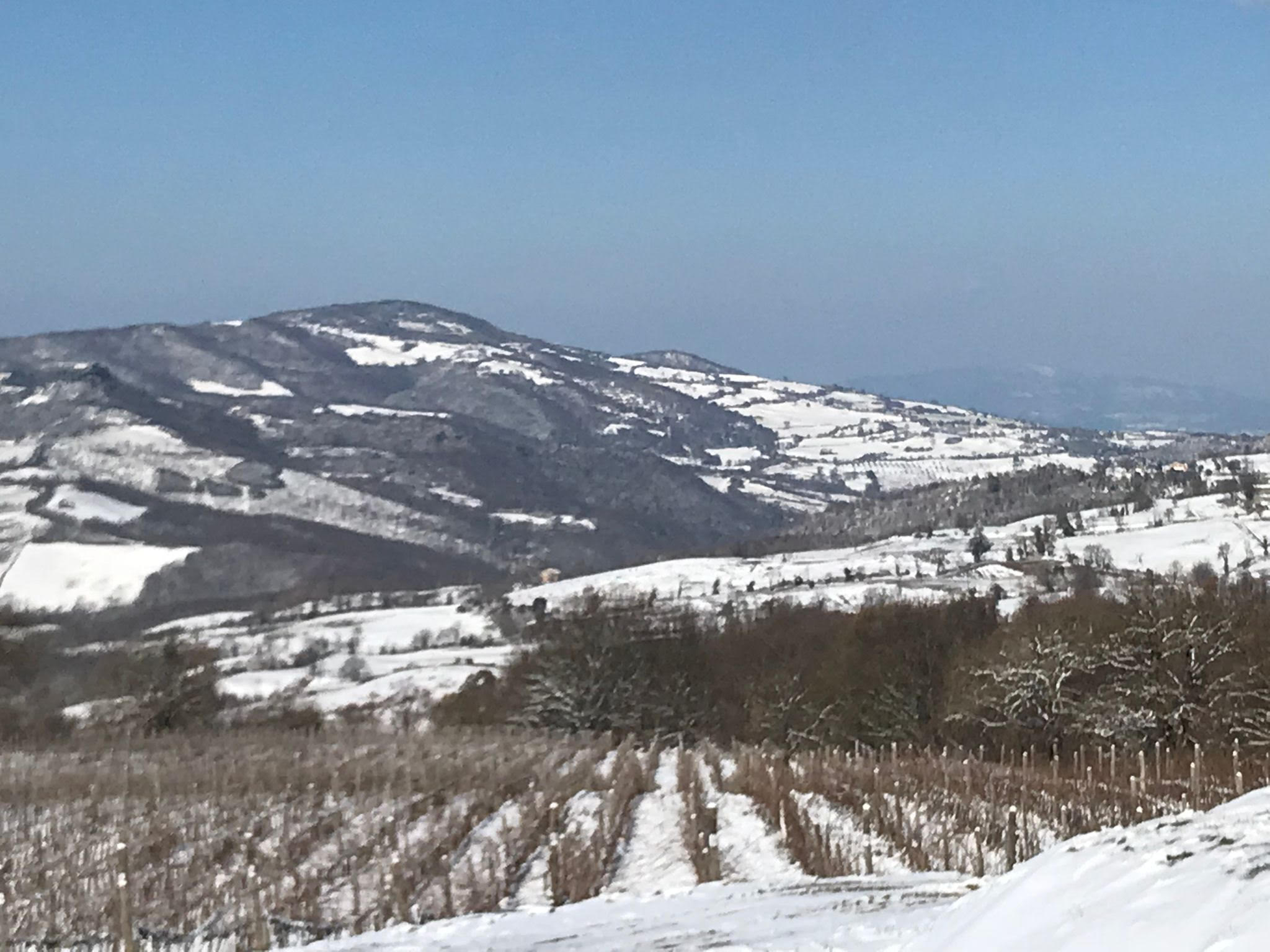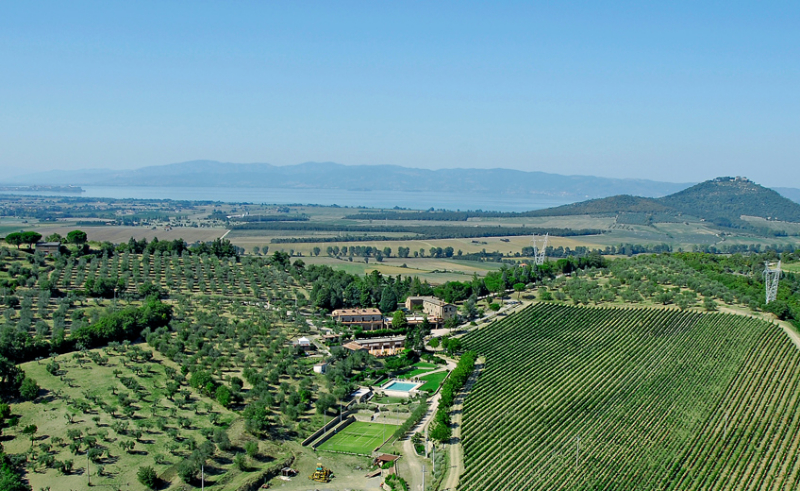Italian Grenache Rosés of the Tyrrhenian Sea
Despite Garnacha / Grenache Noir being known for producing some great reds from Spain, Sardinia and Southern France, many producers felt that it was a variety often ignored compared to more famous international varieties. To counter this an international Grenache Symposium was held in 2010 http://www.grenache-association.com/, an international #GrenacheDay was created every September and an international competition Grenache du Monde was launched in 2013.
In terms of rosé, Grenache Noir is known in Provence and Languedoc as the rosé variety where it makes pale, salmon-coloured wines, with full ripe fruit, sometimes intense with raspberry notes with hints of spice. Its high sugar content and moderate acidity contribute a full round ripeness. However, it did not arrive in the region until the 19th century.
At the Grenache du Monde 2020 walk around tasting it was evident that different names could cause confusion, and while I recognised Cannonau, I was surprised to see Gamay. The adventures of Garnacha read more like a stirring novel with the Tyrrhenian Sea as centre stage. Sardinia has the highest proportion of Grenache grown in Italy, with 32% of Grenache grown in Italy is found in Tuscany. 20% in Sicily.
Grenache is well-adapted to slightly acidic, gravel or stony (pebble) terroirs rather than to very limestone white soil and appears to manage if ungrafted on sandy soils.
The story of Grenache around the Tyrrhenian Sea is as much a historic romance as it is about wine.
The Tyrrhenian Sea
The Tyrrhenian Sea, which sounds like something out of The Game of Thrones, is bounded by the islands of Corsica and Sardinia (to the west), the Italian peninsula (regions of Tuscany, Lazio, Campania, Basilicata, and Calabria) to the east, and the island of Sicily (to the south). The Tyrrhenian Sea also includes a number of smaller islands like Capri, Elba, Ischia, Ustica and the southern Aeolian Islands. It is also where the African and Eurasian Plates meet, creating underwater mountain chains and active volcanoes such as Mount Marsilits.
The name Tyrrhenian derives from the Greek name for the Etruscans, who were said to be emigrants from Lydia and led by the prince Tyrrhenus. The Etruscans settled along the coast of modern Tuscany and referred to the water as the "Sea of the Etruscans". The Aeolian islands are named after the Greek god Aeolus who lived by the Tyrrhenian Sea and looked after the four winds: The Mistral from the Rhône valley, the Libeccio from the southwest, and the Sirocco and Ostro from the south.

Sardinia
On the western side of the Sea lies the islands of Sardinia and Corsica. Sardinia’s strategic location between the Iberian and Italian peninsula made it valuable, and with alternating occupation, cultural exchanges were inevitable. During the 12th century, the Genovese Dorian family were in control of both islands. Genovese rule lasted until the mid-14th century when the island, along with Corsica, was conquered by the Aragonese (which included Catalonia, the Balearics and Roussillon) and became part of the Kingdom of Aragon.
It is thought that the new conquerors brought with them their local vines, including Garnacha, which was renamed Cannonau in Sardinia. In 1469, the heir to Sardinia, Ferdinand II of Aragon, married Isabel of Castile. Their grandson Charles I of Spain inherited the Kingdom of Sardinia (which was separated from Corsica). His successors, to defend their Mediterranean territories from raids of the Barbary pirates, fortified the Sardinian shores with a system of coastal lookout towers, allowing the gradual resettlement of some coastal areas. The Kingdom of Sardinia remained Aragonese-Spanish from 1323 to 1708, and many Catalan traditions, customs and linguistic expressions have survived. In 1720 the Piedmontese family Savoia arrived and the cultural emphasis shifted towards Italy. Stories such as that of the Sella & Mosca winery founded by two Piedmontese adventurers, an engineer called Sella and a lawyer called Mosca came to Sardinia in the 1890s. In 1899 they bought the land and planted with vineyards and today the estate is one of the largest with 520 ha.
Cannonau is the most important grape variety in Sardinia with almost 8,000 hectares planted and its own appellation: Cannonau di Sardegna for red and rosé. The Cannonau di Sardegna rosé is a DOC wine whose production is allowed in the provinces of Cagliari, Nuoro, Oristano and Sassari. A large number of rosés from all around the island are made in a light, more international style.
A little north of Nuoro on the way to Olbia, lies Cantina Contu, a small vineyard at the foot of Mount Albo, a chain of limestone hills some 20km long.in a valley. Kamélia 2019, Cantina Contu, AOP Cannonau di Sardegna. Pale salmon. Peachy raspberry, creamy, hint of grapefruit, nice weight.
Located in the far north, north of Olbia with vineyards on decomposed granite and sandy soils. Surrau 2019 AOP Cannonau di Sardegna. Manual harvest takes place in the first ten days of September. The pressing is soft, of whole grapes not partially destemmed, cold clarification and cold fermentation in tank. Salmon pink, dry, mineral, fresh, very dry. Alcohol 12.5% Total acidity 5.8 g/l Residual sugars 5 g/l.
Fattorie Isola is a joint project with the agronomist Luigi Cuccaru and the oenologist Renzo Panetto to make modern, sustainable Sardinian wines. The grapes are mainly produced in the locality of Tres Montes in the northern Sassari region on largely basaltic soils. Made in a modern, fresh style with minimal skin contact and cold maceration and fermented in tank. Fattoria Isola 2019 AOP Cannonau di Sardegna Fresh, fruity, simple.
Ogliastra is located in central-eastern Sardinia. The Ogliastra Winery was founded in 1959. Selisè 2019 Cantina Ogliastra, Cannonau di Sardegna Pale salmon, cinnamon spice, with fresh mineral acidity and dry finish.
There are also more full-bodied rosés.
Mamoiada, in the north western region of Nuoro, is known for its high-altitude vineyards at over 650 meters above sea level. It is here that Marco Canneddu makes this rosé from vines planted at over 900 meters on mainly granite soils. Hot sun, cooling winds and high altitude give a big diurnal temperature range. The vineyards are ploughed by oxen, the harvest is manual, and the wines go through spontaneous fermentation with indigenous yeast. Zibbo 2019. Marco Cannedelu, AOP Cannonau di Sardegna. Darker pink, lots of red fruit. Very ripe fruit, some tannin notes of finish, but well-balanced by lots of ripe raspberry fruit and fresh acidity. Pleasing sourness, sour cherry on finish.
On the coastal sandy soils of Badesi in northern Sardinia, the vines are ungrafted and trained as albarello creating dense planting and low yields creating rich intense wines.Very hot and arid summers and mild winters, and fierce Mistral winds. Rosamarina 2019, Cantina li Seddi, AOP Cannonau di Sardegna. Pale red. Fresh red fruit. Similar to Zibbo. Vinification in contact with the skins for 12h. Long fresh acidity, hint of tannin on the finish. Nice and fresh and intense red fruit. Far northern coast.

In the far south, around Cagliari is Cantine di Dolianova, the largest winery in Sardinia with 1,200 hectares of its own vineyards, plus 300 members, Modern techniques of cold, short skin contact and cold fermentation in tank. Rosada 2019 Cantina di Dolia Nova AOP Cannonau di Sardegna Rose petal pink, slight floral roses and raspberries. Some rich sweetness, sour cherry red fruit and raspberries. Silky, supple fresh acidity and lots of ripeness. and nice presentation. Clay and limestone hills with a sub-arid climate.
From Capo Ferrato in the eastern part of the Cagliari province, an area most famous for its Passito wines. Founded in 1959 by the Sardinian agrarian reform body supported by the major winemakers in the area, the Cantina di Castiadas harvested grapes from all over the Sarrabus. Rosato Capo Ferrato 2019, Cantina Castiadas Cannonau Capo Ferrato Darker salmon pink. Rich, ripe, more intense fresh acidity. Lots of ripe fruit. On granite soil, minimal skin contact temperature control in tank
In the middle of the western coast by a large coastal lake on volcanic and clay soils comes I Giganti 2019, Contini, AOP Cannonau di Sardegna Pale salmon. Creamy ripeness. Peach, raspberries and fine mineral acidity. Partly fermented in barrel.
Maremma
Maremma faces Sardinia across the Tyrrnhenian Sea and historically there has always been considerable movement between the two regions with both Maremma and Sardinian economy based on herding cattle and sheep. Cannonau was brought over (directly from Aragon or Sardinia is unsure) at the time of the marriage in 1610 between Eleonora da Mendoza in Aragona and Fulvio Ascanio della Corgna, Marquis of Castiglione del Lago further inland in Umbria. This family who dominated much of central Italy (Sardinia, lower Tuscany, part of Umbria, Marche) for almost three centuries.
In Tuscany the variety took on the name Alicante (referring maybe to a Spanish introduction as the region was under direct Spanishcontrol from 1557) and has a strong tradition in Scansano in the east of Maremma, closer to Umbria. (Alicante Bouschet is a cross (Teinturier du Cher x Aramon) x Grenache and is a teinturier grape.)
Maremma itself, was until the Second World War an area of marshes and malaria, with cattle herding in the south, fishing along the coast and agriculture and viticulture only on the hills to the west. Life and activities developed after the Second World War, when the marshes were drained and malaria eliminated. The late development of the area has preserved its biodiversity and wildness, with the province of Grosseto, the largest province in Tuscany, being the one with the lowest density of population and little to no industry.
A second wave introducing this variety to the region came when Cannonau/Alicante moved across the Tyrrhenian Sea after the Second World War, when young Sardinian women moved to the mainland for work, and later marriage, bringing with them vines as part of their dowry.
Coastal Plains with strong maritime influence
Tenuta La Badiola Grenache with rootstock 110 r. The east vineyard, where the sun rises. The soil is sandy loam 15 meters above sea level. Harvest is early, usually at the beginning of September with manual harvesting. White vinification with carbonic snow with a contact of a couple of hours, after which it is separated into free-flowing wine from the press. The first production is around 2008 Acquagiusta is the name of a spring of good water, in an area where once there were swamps, which then becomes a stream. (this brings to mind the area found in the Camargue area.). From 20 year old vineyards next to the sea and on former swamp land at Castiglione la Baiola, Still and sparkling Alicante rosé. Acquaiusta 2019, DOC Maremma Toscana. Very pale shell salmon pink. Creamy, silky, ripe cherry fruit. Very pretty, its creamy softness balanced by crisp crunchy red berry fruit. Acqugiusta ‘Andané’ undergoes second fermentation in Franciacorta. Very perfumed and floral, red fruit and very pretty.

Az Bruni Soffio 2016 100% Alicante. Perfumed quince on the nose, and on the palate, fragrant and aromatic with fresh minerality. First made in 2008
Hilly inland region of Maremma with large diurnal temperature changes
Claudio Sabatucci of Casavyc grows the grapes for his rosé at 500m which gives the wine a fine elegant structure and fresh acidity, rather than a big ripe robust fruit.

Vedorosa 2017 Casavyc IGP Toscana 13% abv Alicante (plus an experimental 10% Pinot Noir) Salmon melon. Lovely fresh saline acidity. Red currants, fresh red berries. Vibrant and fruity with just a merest whisper of dried orange and dried cherry fruit and a nuttiness indicating age and showing the development of secondary fruit characters.
The Passerotti family recently created the Diegale estate, with owner Gabriele explaining how they chose to plant a Corsican clone of Grenache because they felt it had greater acidity. To illustrate the freshness of this clone, Gabriele presented a vertical tasting for me to try. 240-280 metres with a south east, east orientation.
Ciarlibo 2014 Diegale IGP Toscana 14% Pale brick pink. Ripe red fruit, firm saline acidity. Juicy, fresh, savoury. A real gastronomic rosé - mouthwatering, complex with a long freshness and sour fruit.
Ciarlibo 2015 14% abv Tawny red pink. Slightly oxidative aromas. Long fresh minerality, red fruit. Complex sour cherry fruit. some slightly gamey notes in secondary fruit character. Some floral (volatile) notes.
Ciarlibo 2018 Diegale IGP Toscana 14% Grenache. Pale red. Sour fruit, savoury, mineral. Has a long clean austerity but not yet the secondary flavours giving complexity, and not much youthful fruit. More gastronomic.
Umbria
Cannonau or Alicante arrived here at the time of the marriage between Eleonora da Mendoza in Aragona and Fulvio Ascanio della Corgna, Marquis of Castiglione del Lago in 1610. Later, repeated Sardinian episodes of transhumance during the late nineteenth and early twentieth centuries, shepherds came to the mainland peninsula from Sardinia, bringing with them sheep and grapes. The variety was renamed, and became known, rather confusingly as Gamay Perugino, Gamay del Trasimeno or Umbrian Gamay.
The confusion has persisted with the variety being catalogued as 091 Gamay. The error is highlighted by the fact that Cannonau, code 051 of the Vine Variety Register, also has Gamay as a synonym, “for the sole purpose of designating DO and IGT wines from the Province of Perugia”.
According to Nicola Chiucchiurlotto, the owner of Madrevite winery, the area is excellent for wine production. The eastern part, closer to the mountains, has a clayey soil but also rich in layers of rock and limestone with a "continental" climate.
The western part, which is closer to Tuscany has a milder climate with cooling winds and, thanks to the presence of two other small lakes, a clayey soil rich in shells. Carlo and Marco Carini describe the landscape as being full of lakes and hills (Vaiano (371m) and Cimbano (369m)) which contribute to the unique microclimate. With mild winters and hot windy summers.
Rosé in recent years has had considerable success but remains relatively unknown as production remains limited area. Chiucchiurlotto estimates a total production of 100,000 bottles to date. Definitely modern style with similarities to the Provencal one.
This wine region has been undergoing a revival over the past ten years thanks to a number of wineries working together. The cooperative Duca della Corgna, located in the western part of lake Trasimeno, has been established for thirty years.

Martavelo 2019 IGT Umbria, Duca della Corgna Pale salmon pink. Good, sweet ripeness of raspberry fruit, rich. Long mouth-watering acidity. Silky fresh, lovely. 13.5%. Duca della Corgna is the largest commercial producer in the Lake Trasimeno area. Over time, the structure of the Cantina del Trasimeno has grown and has acquired a fundamental role for the agriculture of the area, making wine almost 12,000 tons of grapes in the early 1980s. After a downsizing phase linked to the progressive aging of the vineyards, the winery wanted to focus decisively on high quality wines by renewing the vineyards and using the most advanced technologies available. Today the Cantina del Trasimeno is a cooperative of 200 members for a total vineyard area of about 300 hectares. The use of rigorous agronomic techniques in the vineyard, the decisive technological innovation in the cellar and the technical contribution of serious and qualified professionals in the sector, are the ingredients that make this cooperative winery one of the most interesting realities in the Trasimeno area and in the wine scene. national. The production is organized in such a way as to control every phase of the production cycle, from the countryside to the cellar: the production of the grapes until the harvest, the vinification, the aging of the wine both in wood and in steel, bottling, aging in the bottle.
Bisbetica 2019 IGT Umbria, Madrevite Gamay del Trasimeno on clay soil at 320m Slightly smokey on the nose. Peachy red berry fruit. Almost sweet ripeness and lovely long, vibrant acidity. 13%.
Le Cupe 2019 IGT, Azienda Carlo e Marco Carini have about 60 hectares, 12 of which are under vine, of marl, clay and sandy soils with north west exposure, extending over three different hills and woods on the border between Umbria and Tuscany. Their grandfather Zino grafted the old, rooted cuttings into a new vineyard in the 1970s and the vineyard continues to use these old vines as a source for new plantings. The vineyard is under conversion to becoming organic. The vines for their rosé are 10 to 15 years old on 1ha clay soil in a mid-hill area on the slopes of Monte Tezio (270-360m above sea level). Minimal skin contact, controlled fermentation in tank. The rose is pale salmon pink, very Provence style, weighty fruit, mineral, dry.
Grenache arrived in Liguria, apparently through the port of Savona, possibly directly from Spain, as it retains the name Granaccia. Garnacha appears in other areas in Italy. On the west of the peninsula, it appears in the Marche, especially in the Piceno area, where it is known as Bordò. From there it moved north to the Berici Hills, near Soave, brought, according to legend by clerics on their way from Rome to Avignon.
In a research paper published in 2010 the results found close similarities between the different Grenache varieties.
"The most important result into the centroids was the clean separation among the three geographic origins (Italy, Spain and France) and also the high genetic distance among the Italian accession from different zones of cultivation (Alicante, Tocai rosso, Gamay perugino, Cannonau). The 19 Spanish accessions from six different Garnacha varieties are grouped in the same cluster, well separated tothe Italian and French accessions. ... The results of the microsatellite analysis confirmed that all 53 Garnacha accessions were of the same cultivar, even if they were called Garnacha tinta in Spain, Grenache noir in France and Cannonao or Tocai Rosso orAlicante in Italy, with other local names as Gamayperugino in Tuscany and Umbria or Cannonau in Sardinia."

There are more than 360 clones was planted at a conservatory in the Côtes du Rhône in 1998 and there are twenty-six numbered Grenache clones. The French clone GN 70 is very productive, most widely planted in France and South Africa with berry and spice fruit, but not always the most structured and coloured. The 1064 clone has lower production with higher quality and more tannin. The 513 clone has lower vigour, good quality and higher polyphenols. 516 is of average quality with typical cultivar character. Other international clones with potential: US (Clone 2D), France (ENTAV-INRA 136 and 435), Spain (clones from Navarra – EVENA 11, EVENA 13, EVENA 14 and EVENA 15, VNQUALITAS, clones from Castilla y Leon – CL 55, clones from Aragon – ARA 2 and ARA 24, clones from Rioja – RJ 21).
Grenache is important in both the production of red and rosé wines, and there is still work to be done, especially in the field of rosé wines to highlight regional variation.
=============================
Wines tasted at Grenache du Monde 13 September 2020 and Maremma rosés in May 2020.